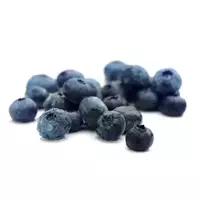Vodianika (shiksha)

Vodianika (shiksha) or as the name Empetrum berries sounds in Latin refers to plants that, according to scientific classification, are included in the Heather family. In its appearance, watermark or shiksha is a low-growing shrub that grows mainly in the Northern Hemisphere. However, watery feels great in the milder climate of South America. Due to its unusual appearance, watermark is often cultivated for decorative purposes.
It is worth noting that it got its original name of watermark thanks to the Greek words en and petros, which literally means "on stones. " It's all about where the plant grows. in Russia, the waterman has long been called nothing more than a raven, drunkard, bagnovka, black grass, psycho and shiksha. The berries of the plant began to be called watery because of the distinctive taste and consumer characteristics of the product. Since the berry pulp contains a large amount of fresh juice.
Researchers claim that the Northern Hemisphere of planet Earth can be considered the homeland of the watermark with one hundred percent confidence. In the southern territories, watermark appeared after the famous ice age. Currently, watery grows in a fairly wide area that extends from Finland to Spain. In addition, watermark (shiksha) is found in the UK, USA, Iceland, Japan, Korea, Mongolia and China. In the Russian Federation, watering is common in the Far East, Kamchatka, Kuril Islands, Siberia and Sakhalin.
As a rule, watery grows in the swamp area, as well as in the territories of rocky tundra, in pine or coniferous forests, and in addition on sand. The benefits of watering for the human body lie primarily in the chemical composition of berries. As a result of research, it was found that the chemical composition of watermakers (shiksha) contains tannins, resins, essential oils, as well as tritepene saponins, vitamin C, acetic, as well as benzoic acids, flavonides, coumarins, manganese, carotene and sugar. Watery berries have long been eaten.
It is noteworthy that watery berries are considered an excellent natural remedy that perfectly quenches thirst. Usually, watery berries are eaten fresh. Nationalities that have long lived on the territory of distribution of watermakers harvest berries for future use. And not only water berries are consumed. For medicinal purposes, decoctions based on leaves, as well as plant shoots, are used.
It is believed that watery helps with some diseases of the digestive and urinary system of the human body. In addition, decoctions made from the rhizome of willow or shiksha help in the treatment of diseases of the organs of vision. Regular consumption of water (shiksha) helps in the prevention and treatment of paralysis, impaired metabolic and digestive processes, as well as epilepsy.
watermakers (shikshi) 33 kCal
Energy value of water (shikshi) (Ratio of proteins, fats, carbohydrates - ju):
Proteins: 0.1 g (~ 0 kCal)
Fats: 0 g (~ 0 kCal)
Carbohydrates: 0.1 g (~ 0 kCal)
Energy ratio (bj | y): 1% | 0% | 1%
 Español
Español Français
Français Português
Português Русский
Русский 简体中文
简体中文 繁體中文
繁體中文 日本語
日本語 한국어
한국어 العربية
العربية Türkçe
Türkçe Қазақ
Қазақ Deutsch
Deutsch Italiano
Italiano Українська
Українська
